Sustainability Reporting and Management Control System: A Structured Literature Review
Abstract
1. Introduction
- RQ1—How do research scholars investigate the relationship between sustainability reporting (SR) and management control systems (MCS)?
- RQ2—What are the emphases, critiques, and gaps in the literature?
2. Conceptual Background of SR and MCS and Their Relationships
2.1. Sustainability Reporting (SR)
2.2. Management Control Systems (MCS)
2.3. Relationship between SR and MCS
3. Research Design, Methodology and Findings
3.1. Literature Search
3.2. Article Impact
3.3. Developing the Analytical Framework
3.4. Developing Reliability
3.5. Testing Literature Review Validity
3.6. Article Coding
3.7. Insights and Critique
3.7.1. Jurisdiction
3.7.2. Organisational Focus
3.7.3. Organisational Location
3.7.4. Focus on SRMCS Literature
3.7.5. Research Methods
3.7.6. SRMCS Frameworks and Models
3.7.7. Management Control Approach
3.7.8. Signal of MCS from SR
3.7.9. Result from the Content Analysis and Towards a Conceptual Framework
- Role of management accounting for setting sustainability strategies;
- The importance of management control tools for executing sustainability strategies;
- The emphasis on sustainability performance in a modern organisation;
- Sustainability reporting—a mirror of the inside-out perspective;
- The role of institutional quality and legitimacy in SR;
- Sustainability reporting being a widely used tool for greenwashing;
- Taking into consideration stakeholders’ expectations and the success factors.
4. Discussion
4.1. Role of Management Accounting for Setting Sustainability Strategies (Arrow Indicator 1)
4.2. The Importance of Management Control Tools for Executing Sustainability Strategies (Arrow Indicator 2)
4.3. The Emphasis on Sustainability Performance in a Modern Organisation (Arrow Indicator 3)
4.4. Sustainability Reporting: A Mirror of the Inside-Out Perspective (Arrow Indicator 4)
4.5. The Role of Institutional Quality and Legitimacy in SR (Arrow Indicators 5 and 6)
4.6. Sustainability Reporting a Widely Used Tool for Greenwashing (Arrow Indicators 8, 9 and 10)
4.7. Taking into Consideration Stakeholders’ Expectations and the Success Factors (Arrow Indicator 7)
4.8. Discussion, Limitations, and Future Research Agenda of Management Control and Sustainability Reporting
- How has the evolution of SR and MCS research taken place?
- How applicable are the theories in the studies on SR and MCS?
5. Concluding Remarks
Funding
Data Availability Statement
Acknowledgments
Conflicts of Interest
Appendix A. The 45 SRMCS Publications Reviewed (2005–2020)
Appendix B
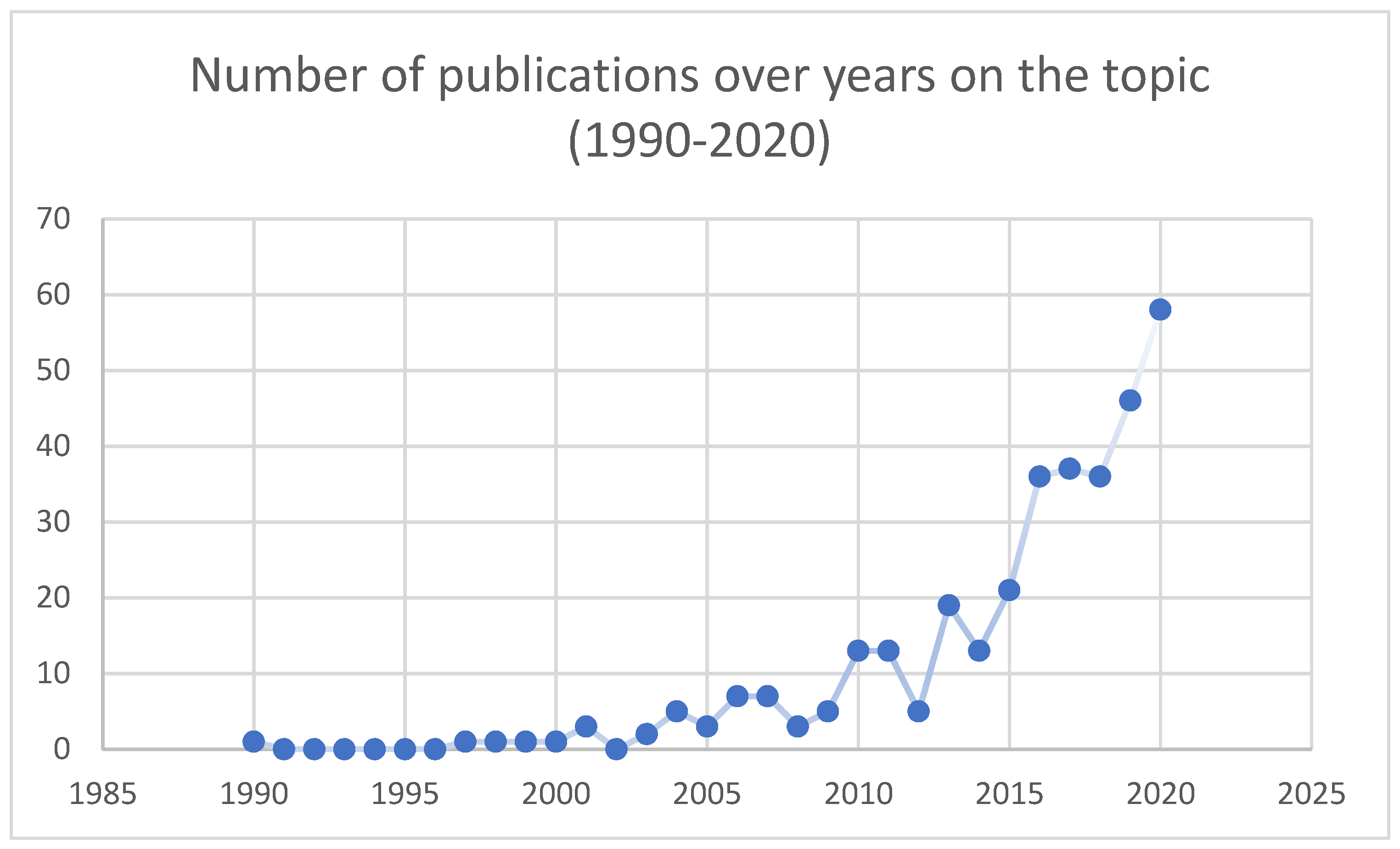
| 1 | We use sustainability reporting and integrated reporting as synonyms in this paper, while still acknowledging their differences. However, we keep in mind the International Integrated Reporting Council stated that a “sustainability report may very well migrate into the integrated report, but only to the extent that it materially relates to value creation over time”. We believe that SR creates value over years. |
| 2 | Here, MC is part of MCS. However, MCS is a much wider concept, which designs and implements strategic processes within an organization. |
| 3 | We added Google Scholar data manually as the platform does not provide the facility to download the search results in the form of a list as Scopus does. |
| 4 | Citations per year were calculated through Harzing’s Publish or Perish software (http://www.harzing.com/pop.html (accessed on 1 September 2020)). |
| 5 | This study is motivated by the seminal work of Secinaro et al. (2022) to formulate research questions as a recommendation. |
References
- Adams, Carol A. 2015. The international integrated reporting council: A call to action. Critical Perspectives on Accounting 27: 23–28. [Google Scholar] [CrossRef]
- Adams, Carol A., and Geoffrey R. Frost. 2008. Integrating sustainability reporting into management practices. Accounting Forum 32: 288–302. [Google Scholar] [CrossRef]
- Adams, Carol A., and Patty McNicholas. 2007. Making a difference: Sustainability reporting, accountability and organisational change. Accounting, Auditing, & Accountability Journal 20: 382–402. [Google Scholar] [CrossRef]
- Al-Shaer, Habiba, and Mahbub Zaman. 2019. CEO compensation and sustainability reporting assurance: Evidence from the UK. Journal of Business Ethics 158: 233–52. [Google Scholar] [CrossRef]
- Anthony, Robert Newton. 1965. Planning and Control Systems: A Framework for Analysis. Cambridge: Harvard University Graduate School of Business Administration. [Google Scholar]
- Arjaliès, Diane-Laure, and Julia Mundy. 2013. The use of management control systems to manage CSR strategy: A levers of control perspective. Management Accounting Research 24: 284–300. [Google Scholar] [CrossRef]
- Arvidsson, Susanne, and Jeaneth Johansson. 2019. Sense-making and sense-giving: Reaching through the smokescreen of sustainability disclosure in the stock market. In Challenges in Managing Sustainable Business. Cham: Palgrave Macmillan, pp. 77–109. [Google Scholar]
- Arvidsson, Susanne, and John Dumay. 2021. Corporate ESG reporting quantity, quality and performance: Where to now for environmental policy and practice? Business Strategy and the Environment 31: 1091–110. [Google Scholar] [CrossRef]
- Ascani, Ilenia, Roberta Ciccola, and Maria Serena Chiucchi. 2021. A structured literature review about the role of management accountants in sustainability accounting and reporting. Sustainability 13: 2357. [Google Scholar] [CrossRef]
- Baker, Max, and Stefan Schaltegger. 2015. Pragmatism and new directions in social and environmental accountability research. Accounting, Auditing & Accountability Journal 28: 263–94. [Google Scholar]
- Bar-Ilan, Judit. 2008. Which h-index?—A comparison of WoS, Scopus and Google Scholar. Scientometrics 74: 257–71. [Google Scholar] [CrossRef]
- Bebbington, Jan, Judy Brown, and Bob Frame. 2007. Accounting technologies and sustainability assessment models. Ecological Economics 16: 224–36. [Google Scholar] [CrossRef]
- Beck, Cornelia, John Dumay, and Geoffrey Frost. 2017. In pursuit of a ‘single source of truth’: From threatened legitimacy to integrated reporting. Journal of Business Ethics 141: 191–205. [Google Scholar] [CrossRef]
- Bernow, Sara, Johathan Godsall, Bryce Klempner, and Charlotte Merten. 2019. More than Values: The Value-Based Sustainability Reporting That Investors Want. Available online: https://www.mckinsey.com/business-functions/sustainability/our-insights/more-than-values-the-value-based-sustainability-reporting-that-investors-want# (accessed on 26 April 2020).
- Berry, Andrew J., Alan F. Coad, Elaine P. Harris, David T. Otley, and Carolyn Stringer. 2009. Emerging themes in management control: A review of recent literature. The British Accounting Review 41: 2–20. [Google Scholar] [CrossRef]
- Bhasin, Madan Lal. 2017. Integrated reporting: The future of corporate reporting. International Journal of Management and Social Sciences Research 6: 17–31. [Google Scholar]
- Birnberg, Jacob G. 2011. Robert N. Anthony: A pioneering thinker in management accounting. Accounting Horizons 25: 593–602. [Google Scholar] [CrossRef][Green Version]
- Biswas, Sharlene, and Winnie O’Grady. 2016. Using external environmental reporting to embed sustainability into organizational practices. Accounting Research Journal 29: 218–34. [Google Scholar] [CrossRef]
- Bonacchi, Massimiliano, and Leonardo Rinaldi. 2007. Dartboards and clovers as new tools in sustainability planning and control. Business Strategy and the Environment 16: 461–73. [Google Scholar] [CrossRef]
- Bretas, Vanessa P. G., and Ilan Alon. 2021. Franchising research on emerging markets: Bibliometric and content analyses. Journal of Business Research 133: 51–65. [Google Scholar] [CrossRef]
- Broadbent, Jane, and James Guthrie. 2008. Public sector to public services: 20 years of ‘contextual’accounting research. Accounting, Auditing & Accountability Journal 21: 129–69. [Google Scholar]
- Bui, Binh, and Charl De Villiers. 2017. Management control systems to support sustainability and integrated reporting. In Sustainability Accounting and Integrated Reporting. London: Routledge, pp. 121–48. [Google Scholar]
- Burritt, Roger L., and Stefan Schaltegger. 2010. Sustainability accounting and reporting: Fad or trend? Accounting, Auditing & Accountability Journal 23: 829–46. [Google Scholar]
- Carenys, Jordi. 2010. Management control systems: A historical perspective. International Bulletin of Business Administration 7: 37–54. [Google Scholar]
- Ceulemans, Kim, Didier Van Caillie, Ingrid Molderez, and Luc Van Liedekerke. 2014. A management control perspective of sustainability reporting in higher education: In search of a holistic view. Proceedings of the International Research Conference on Finance, Risk and Accounting Perspectives (FRAP) 13: 421–37. [Google Scholar]
- Chenhall, Robert H., Matthew Hall, and David Smith. 2010. Social capital and management control systems: A study of a non-government organization. Accounting, Organizations and Society 35: 737–56. [Google Scholar] [CrossRef]
- Chen, Wei-Peng, Huimin Chung, Chengfew Lee, and Wei-Li Liao. 2007. Corporate governance and equity liquidity: Analysis of S&P transparency disclosure rankings. Corporate Governance: An International Review 15: 644–60. [Google Scholar] [CrossRef]
- Chiucchi, Maria Serena, Marco Montemari, and Marco Gatti. 2018. The influence of integrated reporting on management control systems: A case study. International Journal of Business and Management 13: 19. [Google Scholar] [CrossRef]
- Clarkson, Peter M., Michael B. Overell, and Larelle Chapple. 2011. Environmental reporting and its relation to corporate environmental performance. Abacus 47: 27–60. [Google Scholar] [CrossRef]
- Correa-Garcia, Jaime Andres, Maria Antonia Garcia-Benau, and Emma Garcia-Meca. 2020. Corporate governance and its implications for sustainability reporting quality in Latin American business groups. Journal of Cleaner Production 260: 121142. [Google Scholar] [CrossRef]
- Crutzen, Nathalie, Dimitar Zvezdov, and Stefan Schaltegger. 2017. Sustainability and management control. Exploring and theorizing control patterns in large European firms. Journal of Cleaner Production 143: 1291–301. [Google Scholar] [CrossRef]
- Dao, Viet, Ian Langella, and Jerry Carbo. 2011. From green to sustainability: Information Technology and an integrated sustainability framework. The Journal of Strategic Information Systems 20: 63–79. [Google Scholar] [CrossRef]
- De Bem Machado, Andreia, Silvana Secinaro, Davide Calandra, and Federico Lanzalonga. 2022. Knowledge management and digital transformation for Industry 4.0: A structured literature review. Knowledge Management Research & Practice 20: 320–38. [Google Scholar]
- De Villiers, Charl, and Ruth Dimes. 2020. How management control systems enable and constrain integrated thinking. Meditari Accountancy Research 29: 851–72. [Google Scholar]
- De Villiers, Charl, and Warren Maroun. 2017. The future of sustainability accounting and integrated reporting. In Sustainability Accounting and Integrated Reporting. London: Routledge, pp. 163–70. [Google Scholar]
- De Villiers, Charl, Paul Rouse, and Jennifer Kerr. 2016. A new conceptual model of influences driving sustainability based on case evidence of the integration of corporate sustainability management control and reporting. Journal of Cleaner Production 136: 78–85. [Google Scholar] [CrossRef]
- Ditillo, Angelo, and Irene Eleonora Lisi. 2014. Towards a more comprehensive framework for sustainability control systems research. In Accounting for the Environment: More Talk and Little Progress. Bingley: Emerald Group Publishing. [Google Scholar]
- Ditillo, Angelo, and Irene Eleonora Lisi. 2016. Exploring sustainability control systems’ integration: The relevance of sustainability orientation. Journal of Management Accounting Research 28: 125–48. [Google Scholar] [CrossRef]
- Ditlevsen, Marianne Grove, Anne Ellerup Nielsen, and Christa Thomsen. 2013. Corporate reporting: An integrated approach to legitimacy. Journal of Modern Accounting and Auditing 9: 1637–43. [Google Scholar]
- Dkhili, Hichem, and Hedi Noubbigh. 2013. Management control system and the case of CSR in the Tunisian industrial companies: What findings by the method of structural equation? International Review of Management and Marketing 3: 86–92. [Google Scholar]
- Dumay, John, Cristiana Bernardi, James Guthrie, and Paola Demartini. 2016. Integrated reporting: A structured literature review. Accounting Forum 40: 166–85. [Google Scholar] [CrossRef]
- Dumay, John, and Tim Dai. 2017. Integrated thinking as a cultural control? Meditari Accountancy Research 25: 574–604. [Google Scholar] [CrossRef]
- Dumay, John C. 2010. A critical reflective discourse of an interventionist research project. Qualitative Research in Accounting & Management 7: 46–70. [Google Scholar]
- Dumay, John, and Tatiana Garanina. 2013. Intellectual capital research: A critical examination of the third stage. Journal of Intellectual Capital 14: 10–25. [Google Scholar] [CrossRef]
- Durden, Chris. 2008. Towards a socially responsible management control system. Accounting, Auditing & Accountability Journal 21: 671–94. [Google Scholar]
- Eccles, Robert G., and Daniela Saltzman. 2011. Achieving sustainability through integrated reporting. Stanford Social Innovation Review 9: 56–61. [Google Scholar]
- Edmondson, Amy C., and Stacy E. McManus. 2007. Methodological fit in management field research. Academy of Management Review 32: 1246–64. [Google Scholar] [CrossRef]
- Eliwa, Yasser, Ahmed Aboud, and Ahmed Saleh. 2021. ESG practices and the cost of debt: Evidence from EU countries. Critical Perspectives on Accounting 79: 102097. [Google Scholar] [CrossRef]
- Elkington, John. 1997. The triple bottom line. In Environmental Management: Readings and Cases. New York: SAGE. [Google Scholar]
- Epstein, Marc J. 1996. You’ve got a great environmental strategy—Now what? Business Horizons 39: 53–59. [Google Scholar] [CrossRef]
- Epstein, Marc J., Adriana Rejc Buhovac, and Kristi Yuthas. 2015. Managing social, environmental and financial performance simultaneously. Long Range Planning 48: 35–45. [Google Scholar] [CrossRef]
- Epstein, Marc J., and Priscilla S. Wisner. 2005. Managing and controlling environmental performance: Evidence from Mexico. Advances in Management Accounting 14: 115–37. [Google Scholar]
- European Union. 2014. Directive as Regards Disclosure of Non-Financial and Diversity Information by Certain Large Undertakings and Groups, 2014/95/EU. Available online: http://eur-lex.europa.eu/legalcontent/EN/TXT/PDF/?uri=CELEX:32014L0095&from=EN/ (accessed on 20 September 2021).
- Evans, Elaine, Roger Burritt, and James Guthrie. 2011. Bridging the Gap between Academic Accounting Research and Professional Practice. Sydney: Institute of Chartered Accountants in Australia. [Google Scholar]
- Garcia, Solange, Yara Cintra, S. R. Rita de Cássia, and Fabiano Guasti Lima. 2016. Corporate sustainability management: A proposed multi-criteria model to support balanced decision-making. Journal of Cleaner Production 136: 181–96. [Google Scholar] [CrossRef]
- Gatti, Marco, Maria Serena Chiucchi, and Marco Montemari. 2018. Management control systems and integrated reporting: Which relationships? The case of the Azienda Ospedaliero Universitaria Ospedali Riuniti Ancona. International Journal of Business and Management 13: 169–81. [Google Scholar] [CrossRef]
- Gleeson-White, Jane. 2014. Six Capitals: The Revolution Capitalism Has to Have—Or Can Accountants Save the Planet? Sydney: Allen & Unwin. [Google Scholar]
- Gond, Jean-Pascal, Suzana Grubnic, Christian Herzig, and Jeremy Moon. 2012. Configuring management control systems: Theorizing the integration of strategy and sustainability. Management Accounting Research 23: 205–23. [Google Scholar] [CrossRef]
- Gray, Rob. 1992. Accounting and environmentalism: An exploration of the challenge of gently accounting for accountability, transparency and sustainability. Accounting, Organizations & Society 17: 399–425. [Google Scholar]
- Gray, Rob, and Markus Milne. 2004. Towards reporting on the triple bottom line: Mirages, methods and myths. In The Triple Bottom Line: Does It All Add Up? Edited by Adrian Henriques and Julie Richardson. London: Earthscan, pp. 70–80. [Google Scholar]
- Griffith, Alan, and Khalid Bhutto. 2008. Improving environmental performance through integrated management systems (IMS) in the UK. Management of Environmental Quality 19: 565–78. [Google Scholar] [CrossRef]
- Grosvold, Johanne, Stefan U. Hoejmose, and Jens K. Roehrich. 2014. Squaring the circle: Management, measurement and performance of sustainability in supply chains. Supply Chain Management 19: 292–305. [Google Scholar] [CrossRef]
- Guthrie, James, Federica Ricceri, and John Dumay. 2012. Reflections and projections: A decade of intellectual capital accounting research. The British Accounting Review 44: 68–82. [Google Scholar] [CrossRef]
- Haller, Axel, Chris J. Van Staden, and Cristina Landis. 2018. Value added as part of sustainability reporting: Reporting on distributional fairness or obfuscation? Journal of Business Ethics 152: 763–81. [Google Scholar] [CrossRef]
- Hayes, Andrew F., and Klaus Krippendorff. 2007. Answering the call for a standard reliability measure for coding data. Communication Methods and Measures 1: 77–89. [Google Scholar] [CrossRef]
- Heflin, Frank L., Kenneth W. Shaw, and John J. Wild. 2005. Disclosure policy and market liquidity: Impact of depth quotes and order sizes. Contemporary Accounting Research 22: 829–66. [Google Scholar] [CrossRef]
- Henri, Jean-François, and Marc Journeault. 2010. Eco-control: The influence of management control systems on environmental and economic performance. Accounting, Organizations and Society 35: 63–80. [Google Scholar] [CrossRef]
- Herremans, Irene M., and Jamal A. Nazari. 2016. Sustainability reporting driving forces and management control systems. Journal of Management Accounting Research 28: 103–24. [Google Scholar] [CrossRef]
- Herremans, Irene M., Jamal A. Nazari, and Laurie Ingraham. 2010. Externalities and internalities in sustainability reporting. Paper presented at CAAA Annual Conference, Vancouver, BC, Canada, May 27–29. [Google Scholar]
- Herzig, Christian, and Stefan Schaltegger. 2006. Corporate sustainability reporting: An overview. In Sustainability Accounting and Reporting. Dordrecht: Springer, pp. 301–24. [Google Scholar]
- Hoffmann, Esther, Christian Dietsche, and Christine Hobelsberger. 2018. Between mandatory and voluntary: Non financial reporting by German companies. Nachhaltigkeits Management Forum Sustainability Management Forum 26: 47–63. [Google Scholar] [CrossRef]
- Jollands, Stephen, Chris Akroyd, and Norio Sawabe. 2018. Management controls and pressure groups: The mediation of overflows. Accounting, Auditing & Accountability Journal 31: 1644–67. [Google Scholar]
- Jones, Stewart, Geoff Frost, Janice Loftus, and Sandra Van Der Laan. 2007. An empirical examination of the market returns and financial performance of entities engaged in sustainability reporting. Australian Accounting Review 17: 78–87. [Google Scholar] [CrossRef]
- Joseph, George. 2012. Ambiguous but tethered: An accounting basis for sustainability reporting. Critical Perspectives on Accounting 23: 93–106. [Google Scholar] [CrossRef]
- Joshi, Satish, and Yue Li. 2016. What is corporate sustainability and how do firms practice it? A management accounting research perspective. Journal of Management Accounting Research 28: 1–11. [Google Scholar] [CrossRef]
- Jönsson, Sten, and Kari Lukka. 2005. Doing Interventionist Research in Management Accounting. No. 2005: 6. Göteborg: University of Gothenburg, Gothenburg Research Institute GRI. [Google Scholar]
- Kerr, Jennifer, Paul Rouse, and Charl de Villiers. 2015. Sustainability reporting integrated into management control systems. Pacific Accounting Review 27: 189–207. [Google Scholar] [CrossRef]
- Kinderman, Daniel. 2020. The challenges of upward regulatory harmonization: The case of sustainability reporting in the European Union. Regulation & Governance 14: 674–97. [Google Scholar]
- Kober, Ralph, Juliana Ng, and Byron J. Paul. 2007. The interrelationship between management control mechanisms and strategy. Management Accounting Research 18: 425–52. [Google Scholar] [CrossRef]
- Koellner, Thomas, Olaf Weber, Marcus Fenchel, and Roland Scholz. 2005. Principles for sustainability rating of investment funds. Business Strategy and the Environment 14: 54–70. [Google Scholar] [CrossRef]
- La Torre, Matteo, Svetlana Sabelfeld, Marita Blomkvist, Lara Tarquinio, and John Dumay. 2018. Harmonising non-financial reporting regulation in Europe: Practical forces and projections for future research. Meditari Accountancy Research 26: 598–621. [Google Scholar] [CrossRef]
- Laufer, William S. 2003. Social accountability and corporate greenwashing. Journal of Business Ethics 43: 253–61. [Google Scholar] [CrossRef]
- Laughlin, Richard C. 1991. Environmental disturbances and organizational transitions and transformations: Some alternative models. Organization Studies 12: 209–32. [Google Scholar] [CrossRef]
- Lepistö, Lauri, and Eeva-Mari Ihantola. 2018. Understanding the recruitment and selection processes of management accountants: An explorative study. Qualitative Research in Accounting & Management 15: 104–23. [Google Scholar]
- Lueg, Rainer, and Ronny Radlach. 2016. Managing sustainable development with management control systems: A literature review. European Management Journal 34: 158–71. [Google Scholar] [CrossRef]
- Maas, Karen, Stefan Schaltegger, and Nathalie Crutzen. 2016a. Reprint of Advancing the integration of corporate sustainability measurement, management and reporting. Journal of Cleaner Production 136: 1–4. [Google Scholar] [CrossRef]
- Maas, Karen, Stefan Schaltegger, and Nathalie Crutzen. 2016b. Integrating corporate sustainability assessment, management accounting, control, and reporting. Journal of Cleaner Production 136: 237–48. [Google Scholar] [CrossRef]
- Malmi, Teemu, and David A. Brown. 2008. Management control systems as a package—Opportunities, challenges and research directions. Management Accounting Research 19: 287–300. [Google Scholar] [CrossRef]
- Massaro, Maurizio, John Dumay, and James Guthrie. 2016. On the shoulders of giants: Undertaking a structured literature review. Accounting, Auditing & Accountability Journal 29: 767–801. [Google Scholar]
- Miles, Samantha, and Kate Ringham. 2019. The boundary of sustainability reporting: Evidence from the FTSE100. Accounting, Auditing & Accountability Journal 33: 357–90. [Google Scholar]
- Milne, Markus J., and Christian C. C. Chan. 1999. Narrative corporate social disclosures: How much of a difference do they make to investment decision-making? British Accounting Review 31: 439–58. [Google Scholar] [CrossRef]
- Milne, Markus J., and Rob Gray. 2013. W(h)ither ecology? The triple bottom line, the global reporting initiative, and corporate sustainability reporting. Journal of Business Ethics 118: 13–29. [Google Scholar] [CrossRef]
- Mion, Giorgio, and Cristian R. Loza Adaui. 2019. Mandatory nonfinancial disclosure and its consequences on the sustainability reporting quality of Italian and German companies. Sustainability 11: 4612. [Google Scholar] [CrossRef]
- Montecchia, Alessia, Filippo Giordano, and Cecilia Grieco. 2016. Communicating CSR: Integrated approach or selfie? Evidence from the Milan stock exchange. Journal of Cleaner Production 136: 42–52. [Google Scholar] [CrossRef]
- Montemari, Marco, and Maria Serena Chiucchi. 2018. Enabling intellectual capital measurement through business model mapping: The Nexus case. In The Routledge Companion to Intellectual Capital. London: Routledge, pp. 266–83. [Google Scholar]
- Moon, Jeremy, Suzana Grubnic, Christian Herzig, and Jean-Pascal Gon. 2011. Management control for sustainability strategy. CIMA Research Executive Summary Series 7: 1–20. [Google Scholar]
- Morioka, Sandra Naomi, and Marly Monteiro de Carvalho. 2016. A systematic literature review towards a conceptual framework for integrating sustainability performance into business. Journal of Cleaner Production 136: 134–46. [Google Scholar] [CrossRef]
- Narayanan, Venkateshwaran, and Gordon Boyce. 2019. Exploring the transformative potential of management control systems in organisational change towards sustainability. Accounting, Auditing & Accountability Journal 32: 1220–39. [Google Scholar]
- Nazari, Jamal A., Irene M. Herremans, and Hussein A. Warsame. 2015. Sustainability reporting: External motivators and internal facilitators. Corporate Governance 15: 375–90. [Google Scholar] [CrossRef]
- Neumann, Bruce R., Eric Cauvin, and Michael L. Roberts. 2012. Management control systems dilemma: Reconciling sustainability with information overload. In Advances in Management Accounting. Bingley: Emerald Group Publishing. [Google Scholar]
- Nigri, Giorgia, and Mara Del Baldo. 2018. Sustainability reporting and performance measurement systems: How do small- and medium-sized benefit corporations manage integration? Sustainability 10: 4499. [Google Scholar] [CrossRef]
- Oncioiu, Ionica, Anca-Gabriela Petrescu, Florentina-Raluca Bîlcan, Marius Petrescu, Delia-Mioara Popescu, and Elena Anghel. 2020. Corporate sustainability reporting and financial performance. Sustainability 12: 4297. [Google Scholar] [CrossRef]
- Otley, David. 1994. Management control in contemporary organizations: Towards a wider framework. Management Accounting Research 5: 289–99. [Google Scholar] [CrossRef]
- Perego, Paolo, and Frank Hartmann. 2009. Aligning performance measurement systems with strategy: The case of environmental strategy. Abacus 45: 397–428. [Google Scholar] [CrossRef]
- Rahi, ABM Fazle, Mohammad Ashraful Ferdous Chowdhury, Jeaneth Johansson, and Marita Blomkvist. 2022a. Nexus between institutional quality and corporate sustainable performance: European evidence. Journal of Cleaner Production, 135188. [Google Scholar] [CrossRef]
- Rahi, ABM Fazle, Ruzlin Akter, and Jeaneth Johansson. 2022b. Do sustainability practices influence financial performance? Evidence from the Nordic financial industry. Accounting Research Journal 35: 292–314. [Google Scholar] [CrossRef]
- Reimsbach, Daniel, Rüdiger Hahn, and Anil Gürtürk. 2018. Integrated reporting and assurance of sustainability information: An experimental study on professional investors’ information processing. European Accounting Review 27: 559–81. [Google Scholar] [CrossRef]
- Riccaboni, Angelo, and Emilia Luisa Leone. 2010. Implementing strategies through management control systems: The case of sustainability. International Journal of Productivity and Performance Management 59: 130–44. [Google Scholar] [CrossRef]
- Schaltegger, Stefan. 2011. Sustainability as a driver for corporate economic success: Consequences for the development of sustainability management control. Society and Economy 33: 15–28. [Google Scholar] [CrossRef]
- Schaltegger, Stefan, and Jacob Hörisch. 2017. In search of the dominant rationale in sustainability management: Legitimacy or profit-seeking? Journal of Business Ethics 145: 259–76. [Google Scholar] [CrossRef]
- Schaltegger, Stefan, and Marcus Wagner. 2006. Integrative management of sustainability performance, measurement and reporting. International Journal of Accounting, Auditing and Performance Evaluation 3: 1–19. [Google Scholar] [CrossRef]
- Secinaro, Silvana, Davide Calandra, Federico Lanzalonga, and Alberto Ferraris. 2022. Electric vehicles’ consumer behaviours: Mapping the field and providing a research agenda. Journal of Business Research 150: 399–416. [Google Scholar] [CrossRef]
- Simons, Robert. 1994. How new top managers use control systems as levers of strategic renewal. Strategic Management Journal 15: 169–89. Available online: www.jstor.org/stable/2486965 (accessed on 20 April 2020). [CrossRef]
- Skoog, Matti. 2003. Visualizing value creation through the management control of intangibles. Journal of Intellectual Capital 4: 487–504. [Google Scholar] [CrossRef]
- Sugita, Masaki, and Takuya Takahashi. 2015. Influence of corporate culture on environmental management performance: An empirical study of Japanese firms. Corporate Social Responsibility and Environmental Management 22: 182–92. [Google Scholar] [CrossRef]
- Sundin, Heidi, and David Andrew Brown. 2017. Greening the black box: Integrating the environment and management control systems. Accounting, Auditing & Accountability Journal 30: 620–42. [Google Scholar]
- Thijssens, Thomas, Laury Bollen, and Harold Hassink. 2016. Managing sustainability reporting: Many ways to publish exemplary reports. Journal of Cleaner Production 136: 86–101. [Google Scholar] [CrossRef]
- Thoradeniya, Prabanga, Janet Lee, Rebecca Tan, and Aldonio Ferreira. 2015. Sustainability reporting and the theory of planned behaviour. Accounting, Auditing & Accountability Journal 28: 1099–137. [Google Scholar]
- Tilt, Carol Ann. 2006. Linking environmental activity and environmental disclosure in an organisational change framework. Journal of Accounting & Organizational Change 2: 4–24. [Google Scholar]
- Traxler, Albert Anton, Daniela Schrack, and Dorothea Greiling. 2020. Sustainability reporting and management control—A systematic exploratory literature review. Journal of Cleaner Production 276: 122725. [Google Scholar] [CrossRef]
- Vatn, Arild. 2020. Institutions for sustainability—Towards an expanded research program for ecological economics. Ecological Economics 168: 106507. [Google Scholar] [CrossRef]
- Waddock, Sandra A., and Samuel B. Graves. 1997. The corporate social performance–financial performance link. Strategic Management Journal 18: 303–19. [Google Scholar] [CrossRef]
- WBCSD. 2015. Reporting Matters: Redefining Performance and Disclosure. Available online: https://www.wbcsd.org/Programs/Redefining-Value/External-Disclosure/Reporting-matters/Resources/Reporting-matters-2015 (accessed on 1 November 2021).
- White, Gwendolen B. 2016. Sustainability Reporting: Getting Started, 2nd ed. Hampton: Business Expert Press. [Google Scholar]
- White, Theresa L., and Donald H. McBurney. 2012. Research Methods, 9th ed. Belmont: Wadsworth. [Google Scholar]
- Winchester, Catherine L., and Mark Salji. 2016. Writing a literature review. Journal of Clinical Urology 9: 308–12. [Google Scholar] [CrossRef]
- Wulf, Inge, Jens Niemöller, and Natalia Rentzsch. 2014. Development toward integrated reporting, and its impact on corporate governance: A two-dimensional approach to accounting with reference to the German two-tier system. Journal of Management Control 25: 135–64. [Google Scholar] [CrossRef]
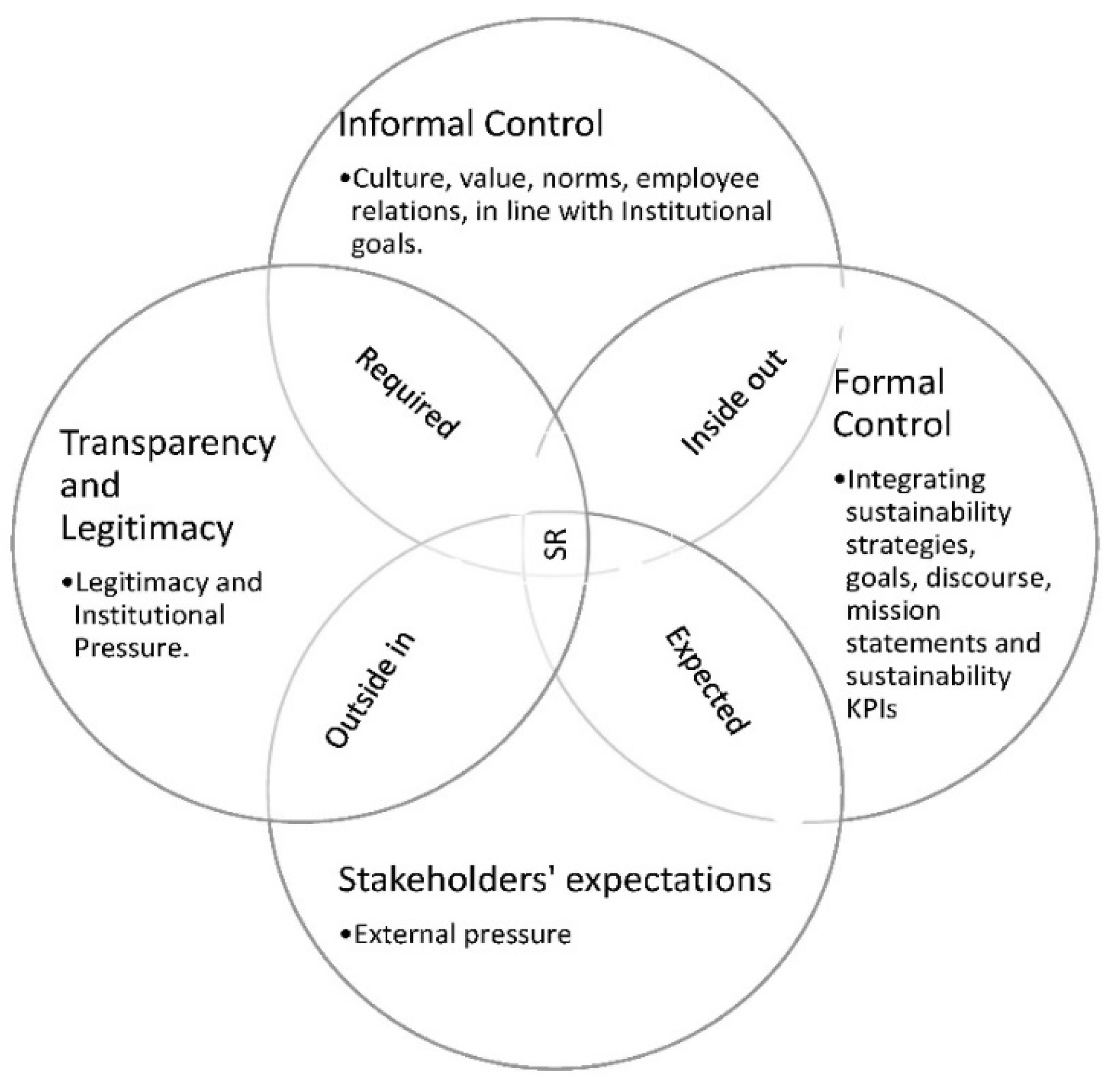
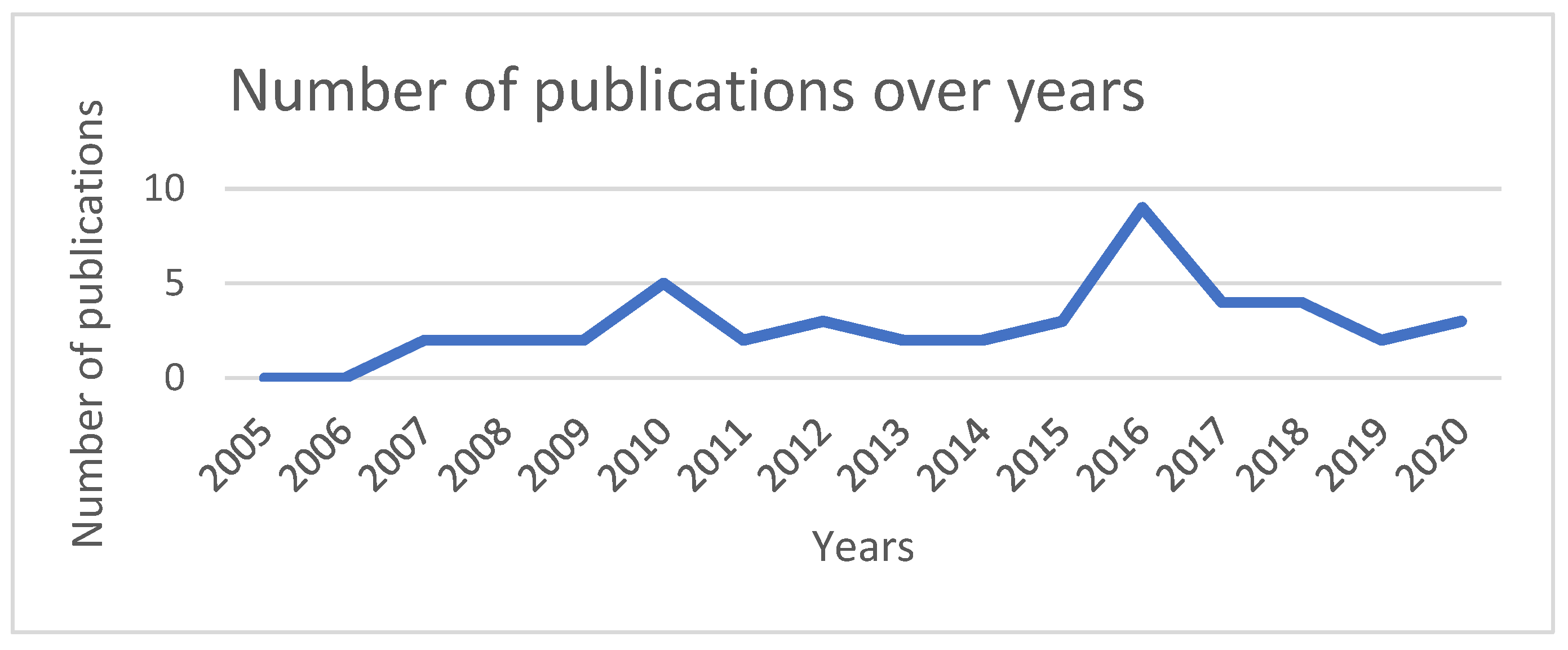
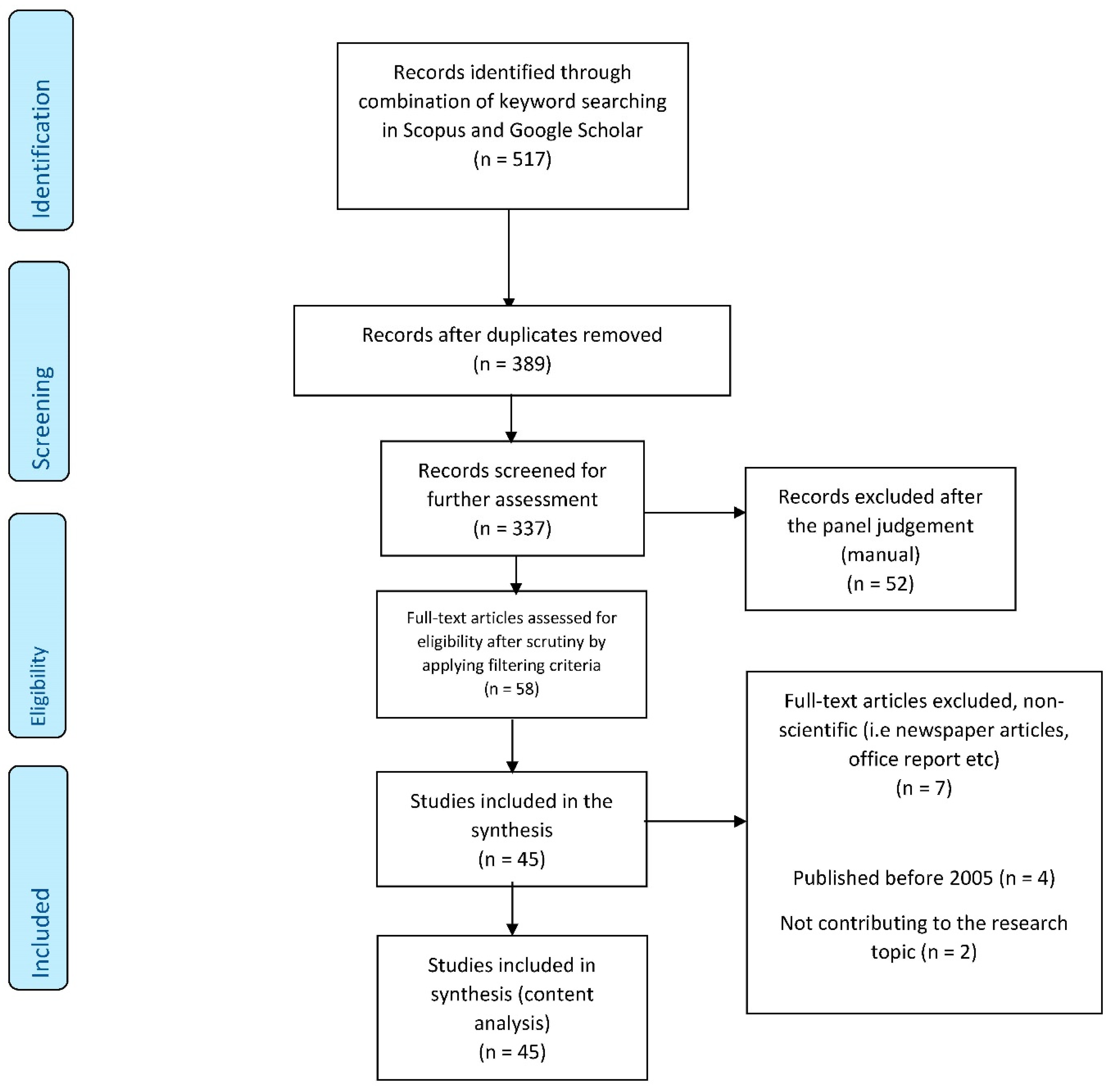
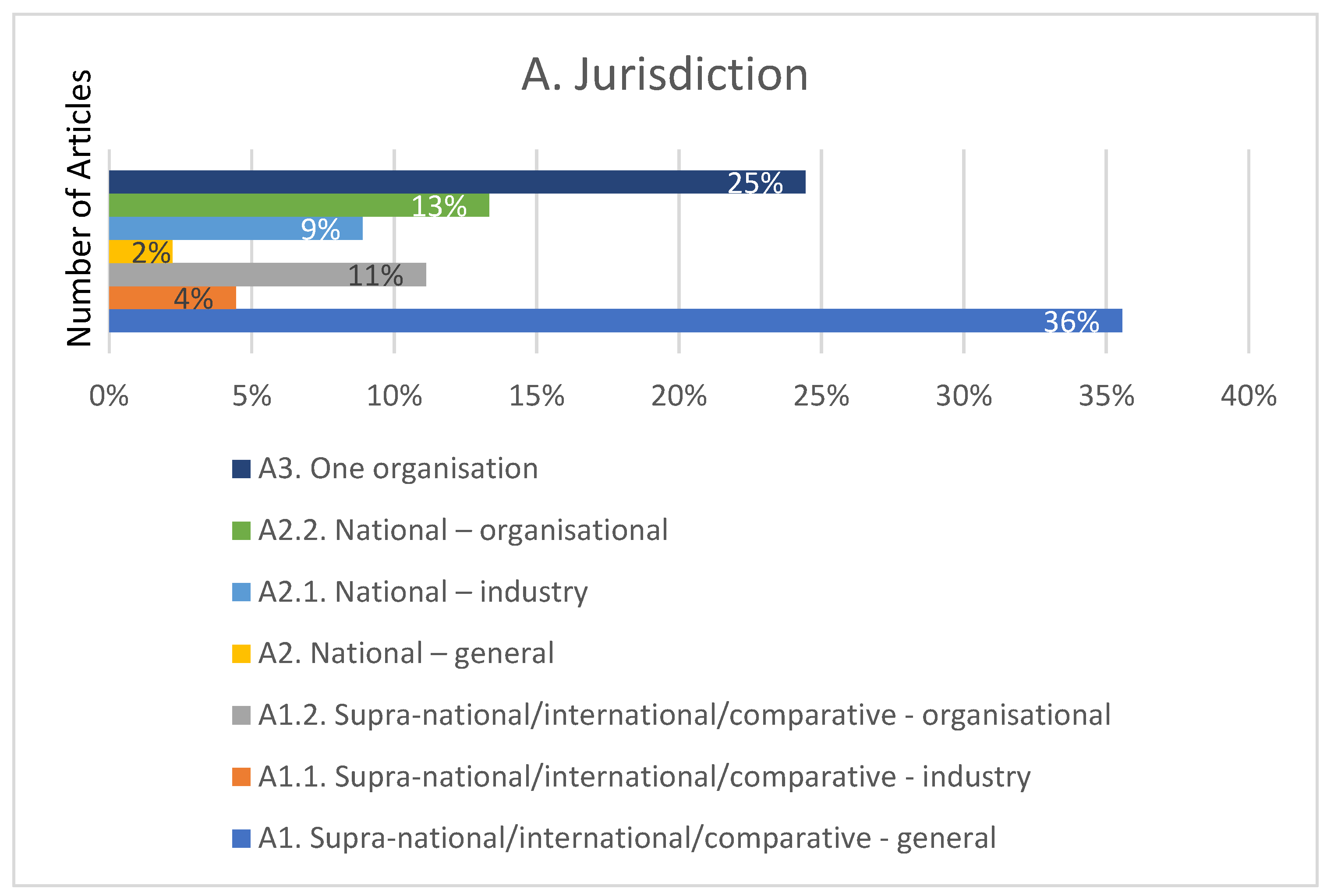
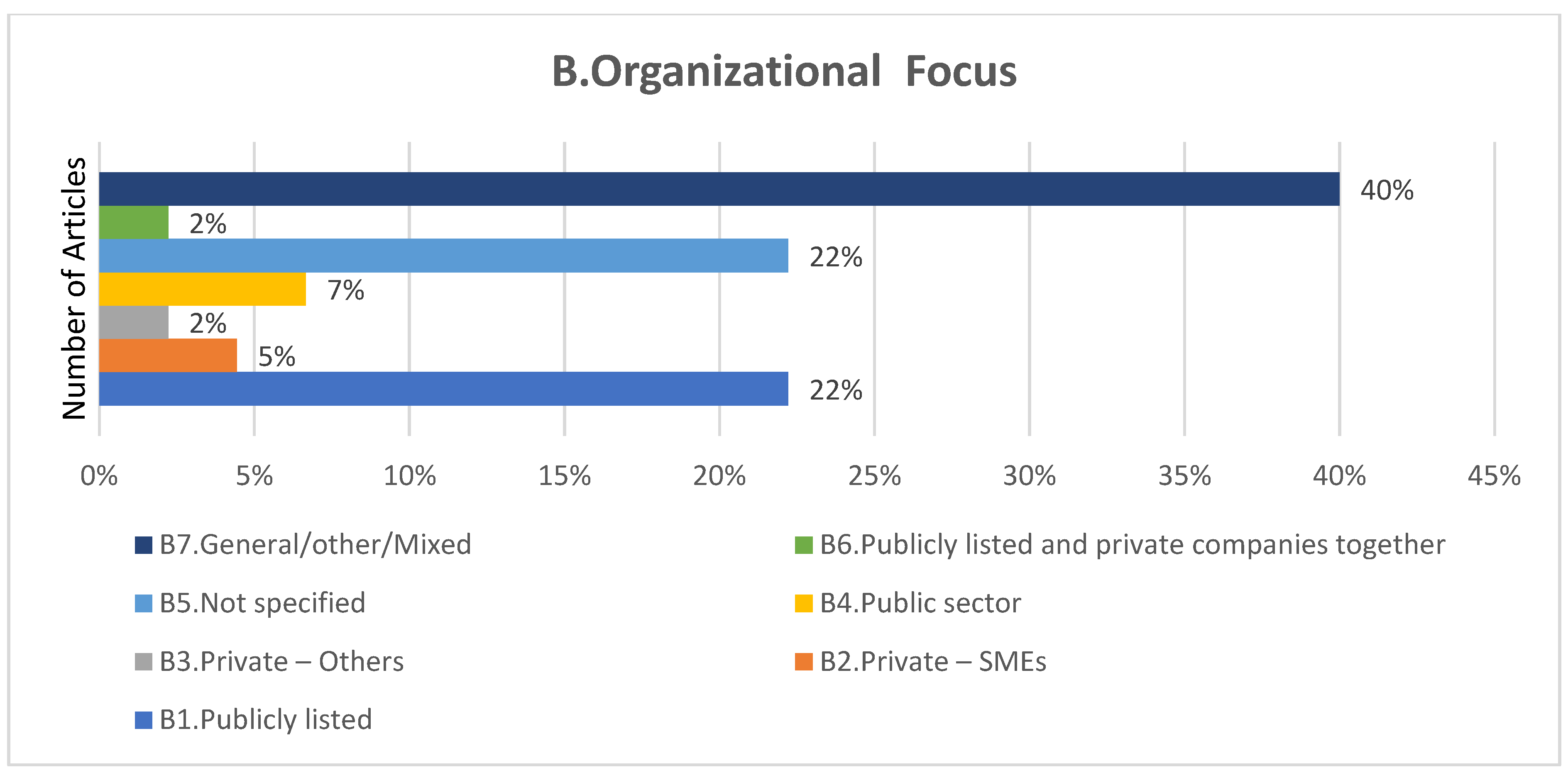
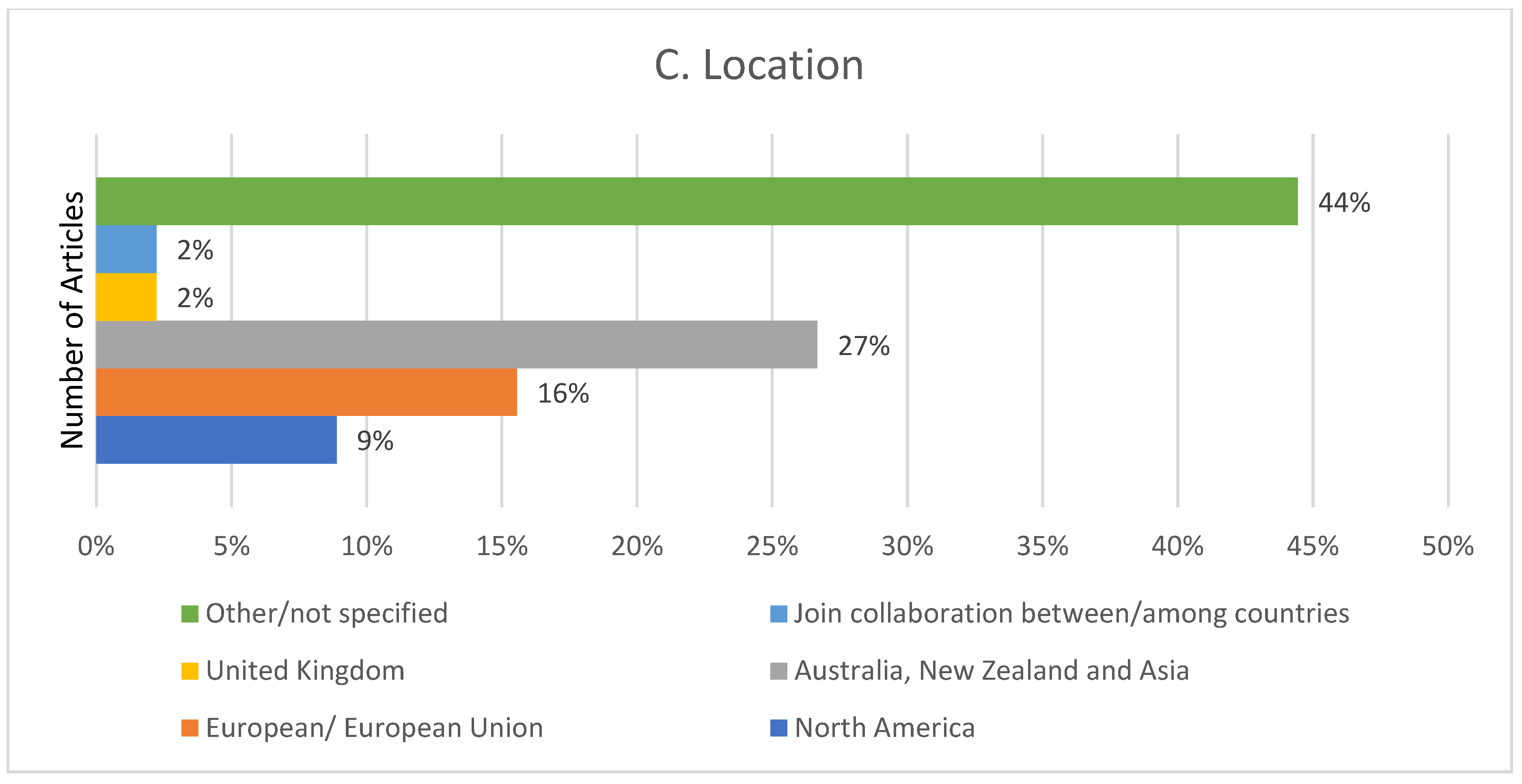
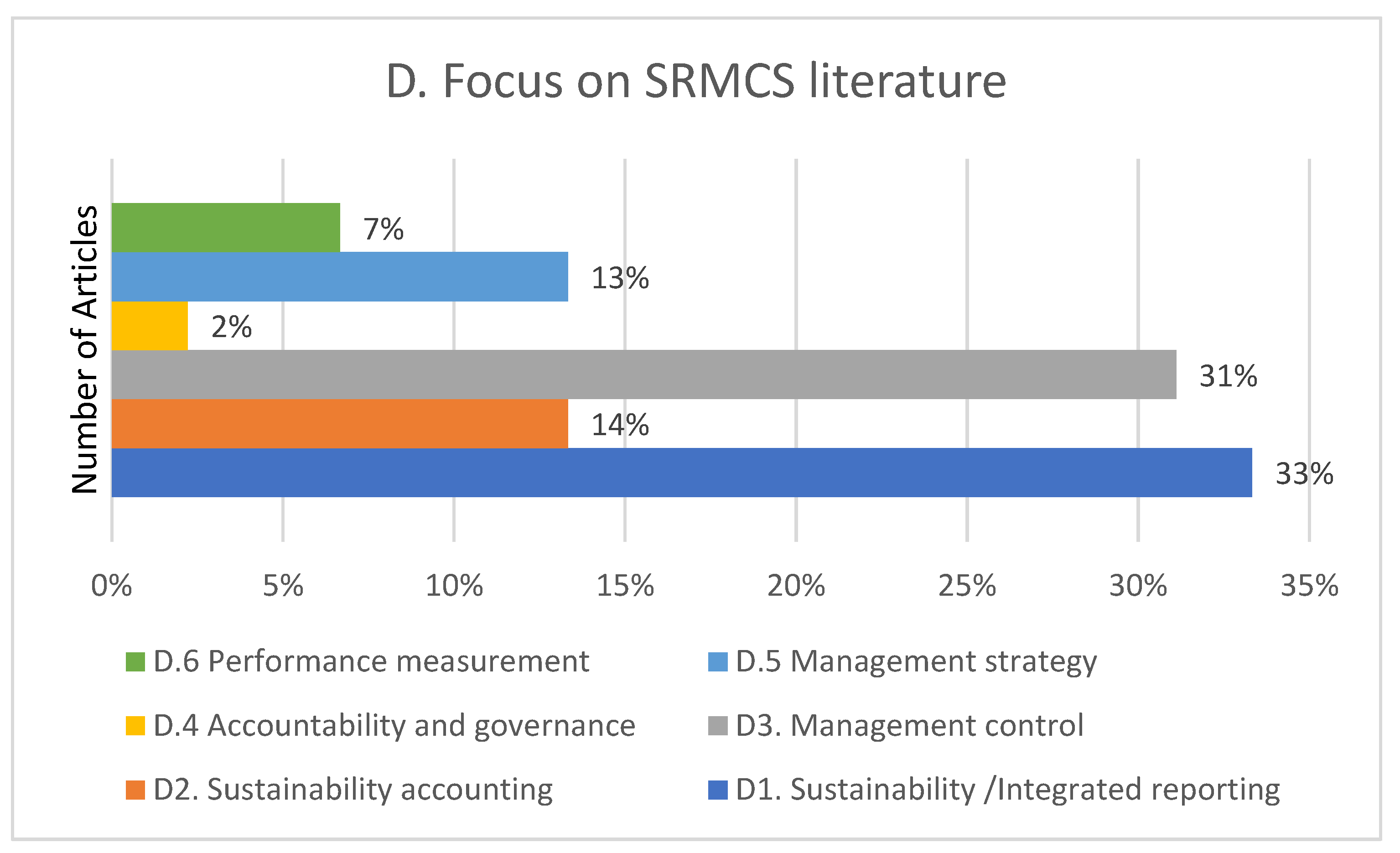
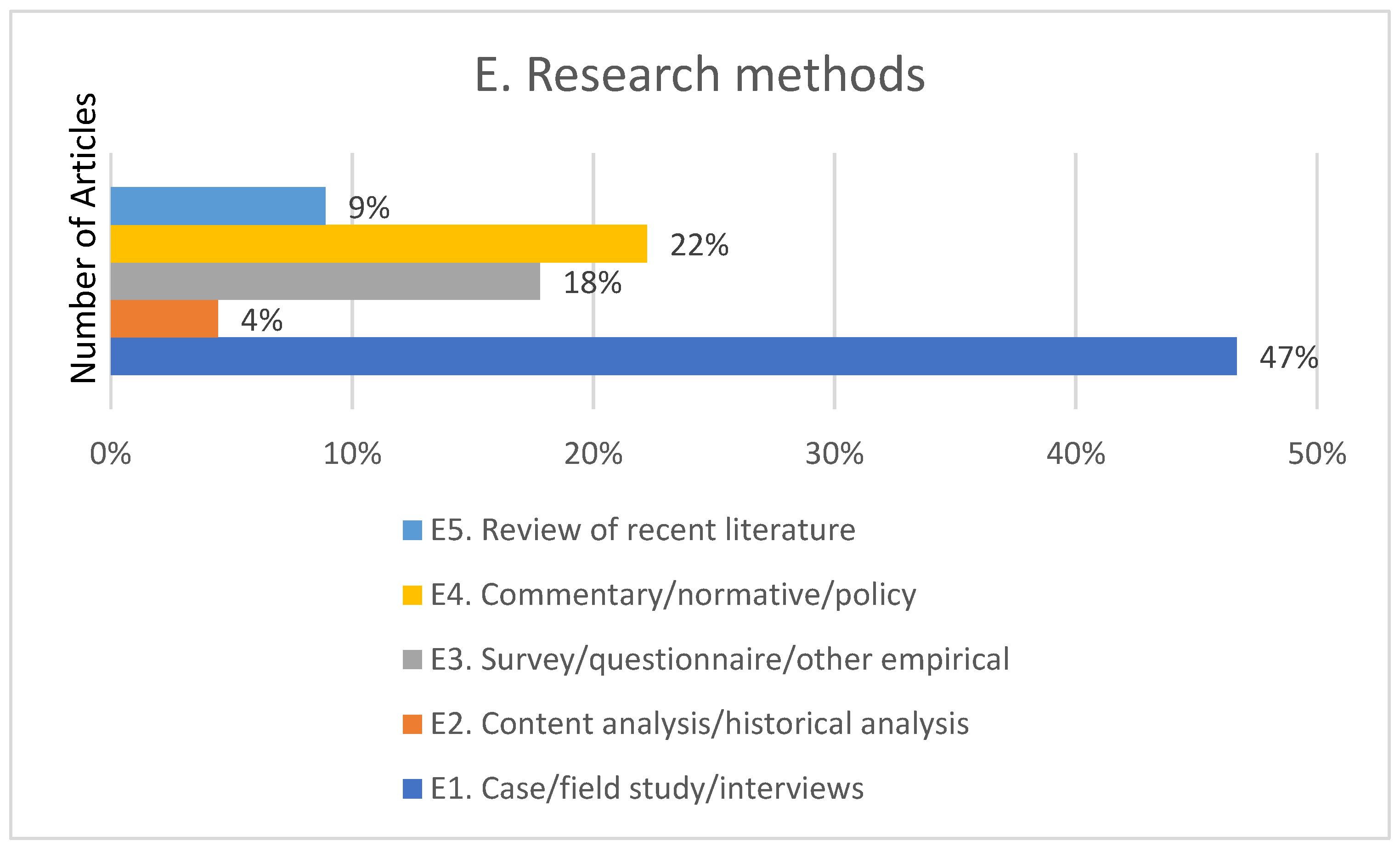
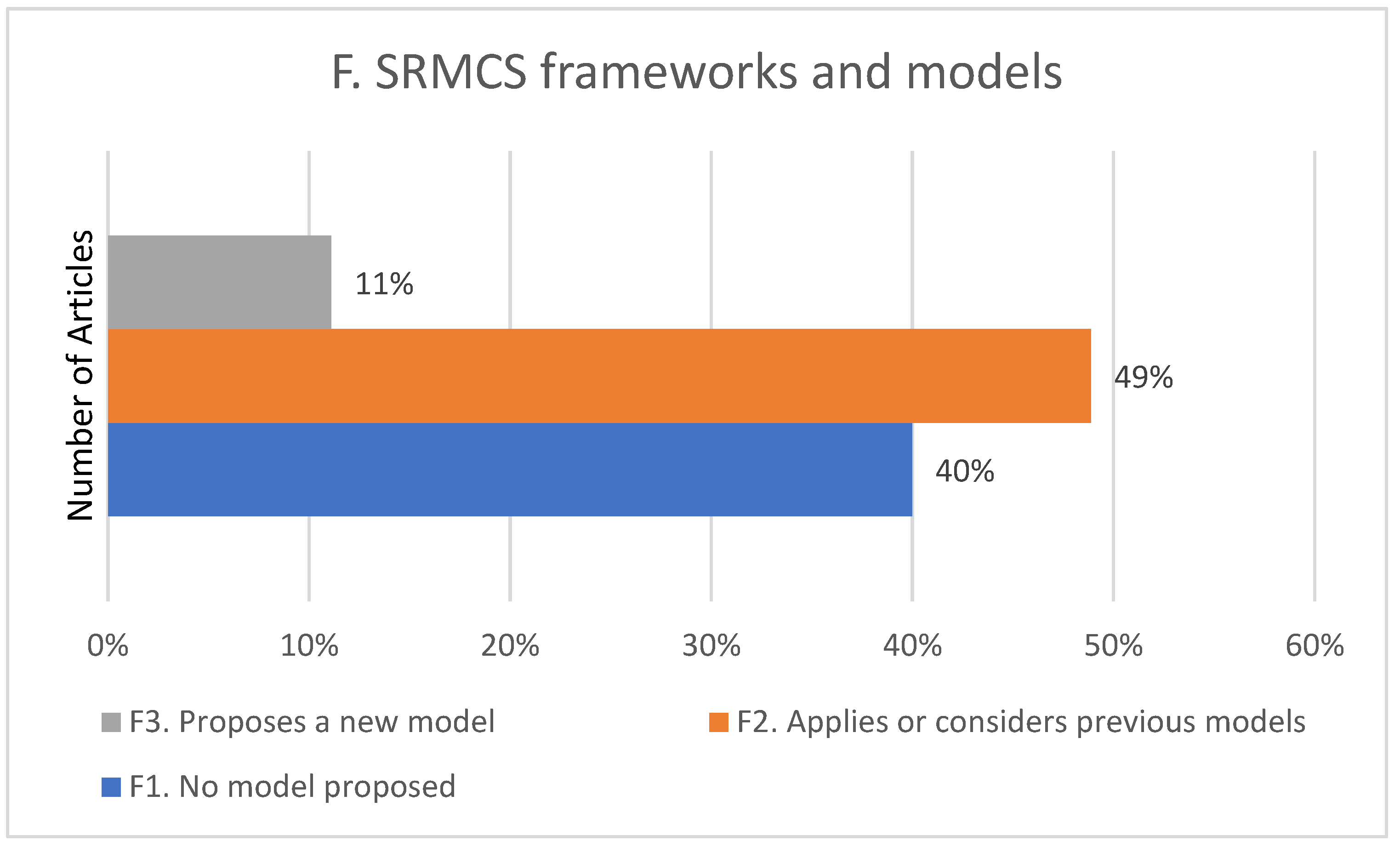
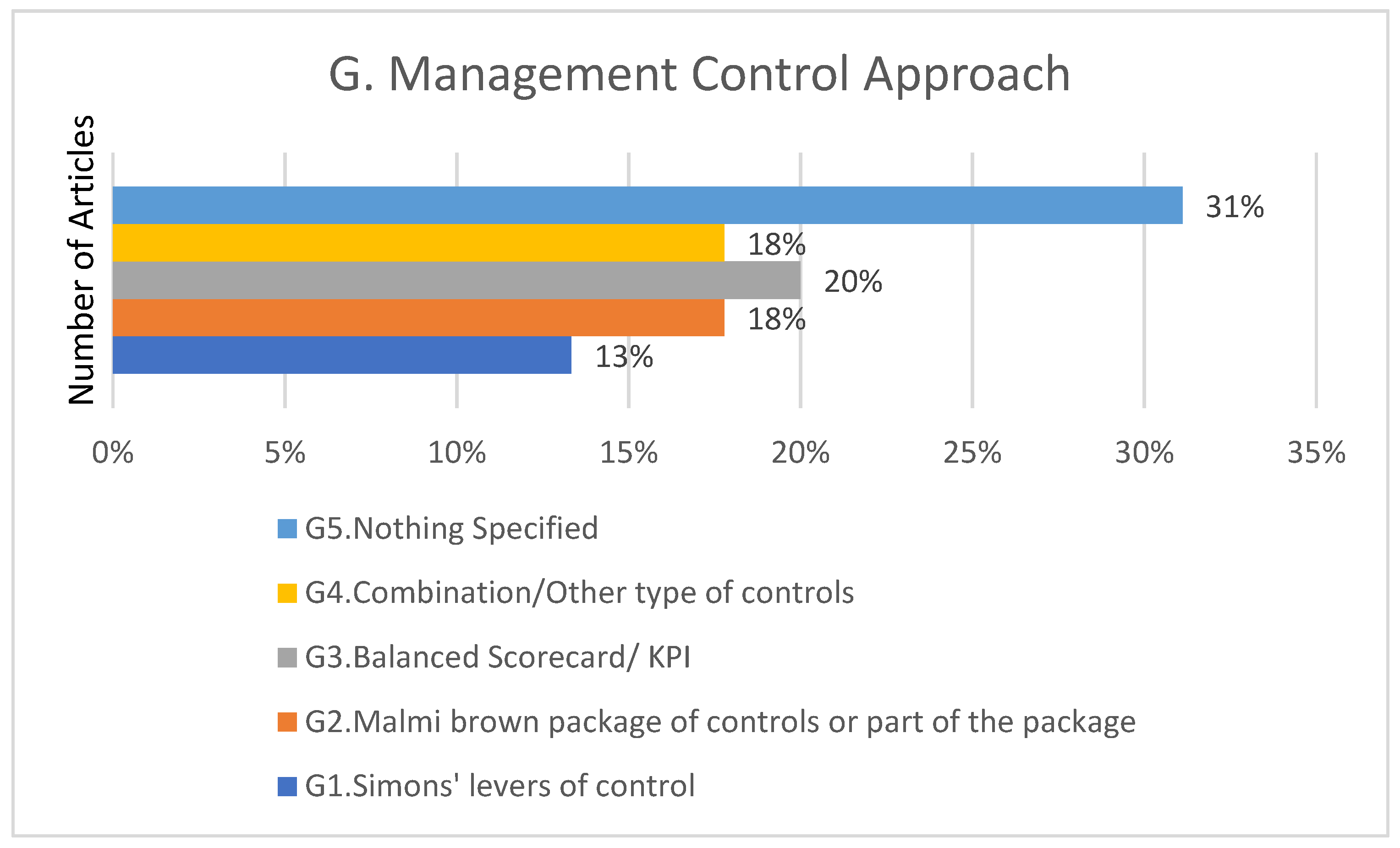
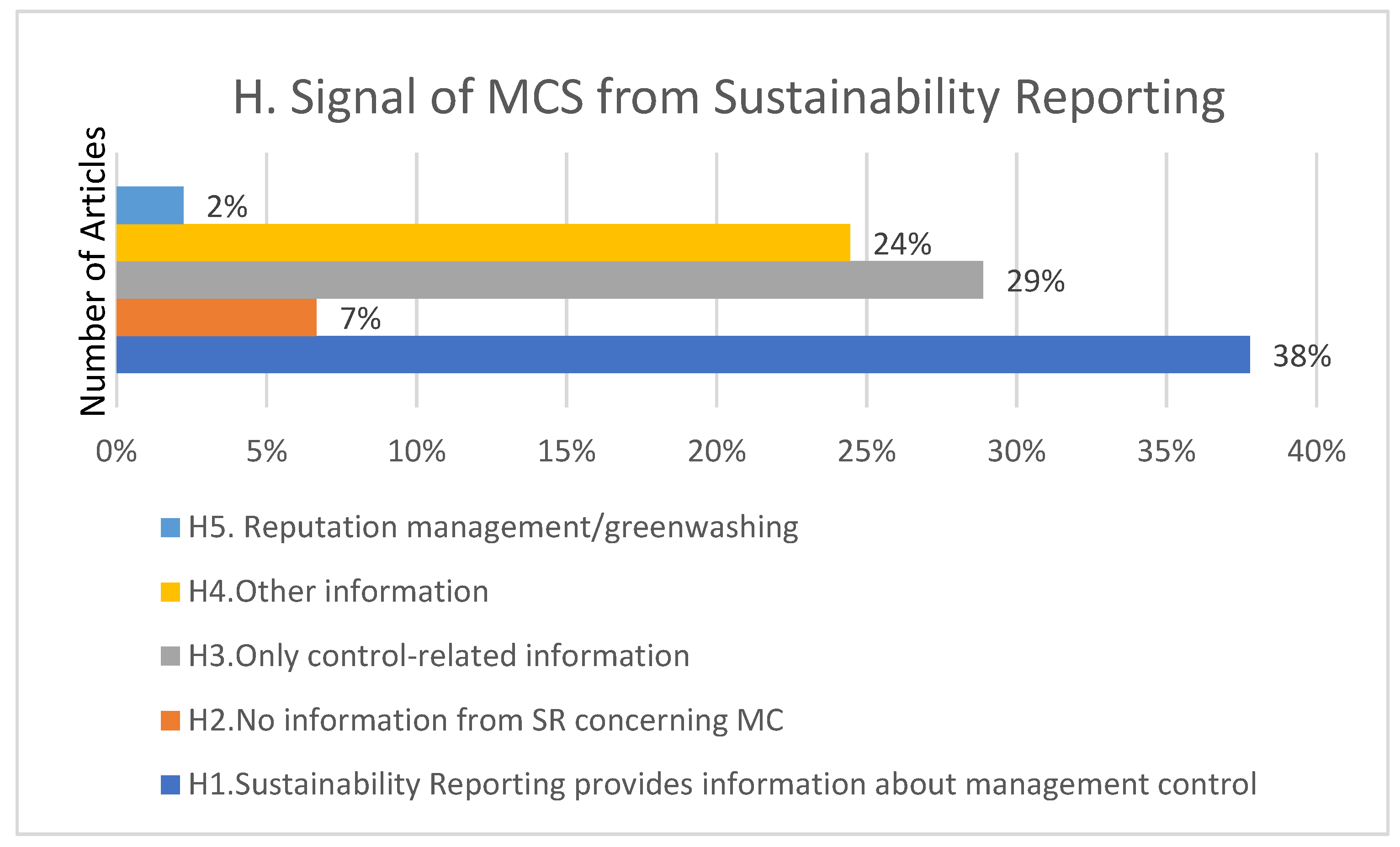
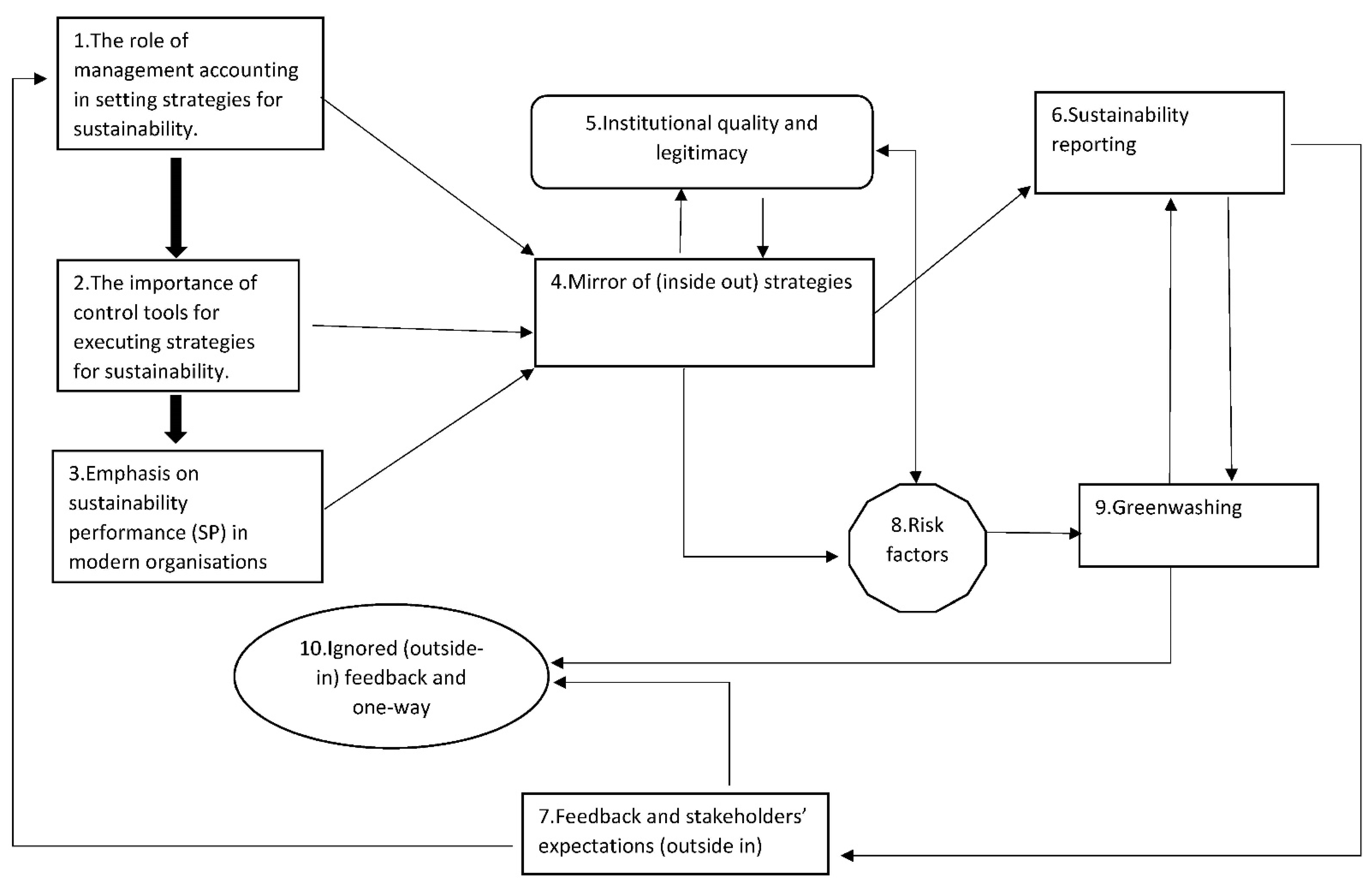
| Title | Total Citations as per GS | Authors (Year) | Journals | Type | ABDC Ranking |
|---|---|---|---|---|---|
| Emerging themes in management control: a review of recent literature | 599 | Berry et al. (2009) | The British Accounting Review | Article | A* |
| Sustainability accounting and reporting: fad or trend? | 595 | Burritt and Schaltegger (2010) | Accounting, Auditing & Accountability Journal | Article | A* |
| Integrating sustainability reporting into management practices | 558 | Adams and Frost (2008) | Accounting Forum | Article | B |
| Eco-control: the influence of management control systems on environmental and economic performance | 529 | Henri and Journeault (2010) | Accounting, Organizations and Society | Article | A* |
| The interrelationship between management control mechanisms and strategy | 369 | Kober et al. (2007) | Management Accounting Research | Article | A* |
| Configuring management control systems: theorizing the integration of strategy and sustainability | 357 | Gond et al. (2012) | Management Accounting Research | Article | A* |
| The use of management control systems to manage CSR strategy: a levers of control perspective | 308 | Arjaliès and Mundy (2013) | Management Accounting Research | Article | A* |
| Towards a socially responsible management control system | 231 | Durden (2008) | Accounting, Auditing & Accountability Journal | Article | A* |
| Integrating corporate sustainability assessment, management accounting, control, and reporting | 189 | Maas et al. (2016b) | Journal of Cleaner Production | Article | A |
| Managing social, environmental and financial performance simultaneously | 153 | Epstein et al. (2015) | Long Range Planning | Article | A |
| Title | CPY as per Google Scholar | Authors (Year) | Journals | Type | ABDC Ranking |
|---|---|---|---|---|---|
| Sustainability accounting and reporting: fad or trend? | 60 | Burritt and Schaltegger (2010) | Accounting, Auditing & Accountability Journal | Article | A* |
| Emerging themes in management control: a review of recent literature | 54 | Berry et al. (2009) | The British Accounting Review | Article | A* |
| Eco-control: the influence of management control systems on environmental and economic performance | 53 | Henri and Journeault (2010) | Accounting, Organizations and Society | Article | A* |
| Integrating sustainability reporting into management practices | 47 | Adams and Frost (2008) | Accounting Forum | Article | B |
| Integrating corporate sustainability assessment, management accounting, control, and reporting | 47 | Maas et al. (2016b) | Journal of Cleaner Production | Article | A |
| Configuring management control systems: theorizing the integration of strategy and sustainability | 44 | Gond et al. (2012) | Management Accounting Research | Article | A* |
| The use of management control systems to manage CSR strategy: a levers of control perspective | 44 | Arjaliès and Mundy (2013) | Management Accounting Research | Article | A* |
| Integrated thinking as a cultural control? | 35 | Dumay and Dai (2017) | Meditari Accountancy Research | Article | A |
| Managing social, environmental and financial performance simultaneously | 31 | Epstein et al. (2015) | Long Range Planning | Article | A |
| The interrelationship between management control mechanisms and strategy | 28 | Kober et al. (2007) | Management Accounting Research | Article | A* |
| A: Jurisdiction | No | E. Research methods | No |
| A1. Supra-national/international/comparative—general | 16 | E1. Case/field study/interviews | 21 |
| A1.1. Supra-national/international/comparative—industry | 2 | E2. Content analysis/historical analysis | 2 |
| A1.2. Supra-national/international/comparative—organisational | 5 | E3. Survey/questionnaire/other empirical | 8 |
| A2. National—general | 1 | E4. Commentary/normative/policy | 10 |
| A2.1. National—industry | 4 | E5. Critical review of the recent literature | 4 |
| A2.2. National—organisational | 6 | Total | 45 |
| A3. One organisation | 11 | F. SRMCS frameworks and models | No |
| Total | 45 | F1. No model proposed | 18 |
| B: Organisational focus | No | F2. Applies or considers previous models | 22 |
| Publicly listed | 10 | F3. Proposes a new model | 5 |
| Private—SMEs | 2 | Total | 45 |
| Private—others | 1 | G. Management control approach | No |
| Public sector | 3 | G1. Simons’ levers of control | 6 |
| Not specified | 10 | G2. Malmi–Brown package of controls or part of the package | 8 |
| General/other/mixed | 18 | G3. Balanced scorecard/KPIs | 9 |
| Publicly listed and private companies | 1 | G4. Combination/other type of controls | 8 |
| Total | 45 | G5. Nothing specified | 14 |
| C. Location | No | Total | 45 |
| North America | 4 | H. Signal of MCS from SR | No |
| European/European Union | 7 | H1. Sustainability reporting provides information about management control | 17 |
| Australia, New Zealand, and Asia | 12 | H2. No information from SR concerning MCS | 3 |
| United Kingdom | 1 | H3. Only control-related information | 13 |
| Joint collaboration between/among countries | 1 | H4. Other information | 11 |
| Other/not specified | 20 | H5. Reputation management/greenwashing | 1 |
| Total | 45 | Total | 45 |
| D. Focus of the SRMCS literature | No | ||
| Sustainability/integrated reporting | 15 | ||
| Sustainability accounting | 6 | ||
| Management control | 14 | ||
| Accountability and governance | 1 | ||
| Management strategy | 6 | ||
| Performance measurement | 3 | ||
| Total | 45 |
Publisher’s Note: MDPI stays neutral with regard to jurisdictional claims in published maps and institutional affiliations. |
© 2022 by the authors. Licensee MDPI, Basel, Switzerland. This article is an open access article distributed under the terms and conditions of the Creative Commons Attribution (CC BY) license (https://creativecommons.org/licenses/by/4.0/).
Share and Cite
Rahi, A.F.; Johansson, J.; Fagerström, A.; Blomkvist, M. Sustainability Reporting and Management Control System: A Structured Literature Review. J. Risk Financial Manag. 2022, 15, 562. https://doi.org/10.3390/jrfm15120562
Rahi AF, Johansson J, Fagerström A, Blomkvist M. Sustainability Reporting and Management Control System: A Structured Literature Review. Journal of Risk and Financial Management. 2022; 15(12):562. https://doi.org/10.3390/jrfm15120562
Chicago/Turabian StyleRahi, ABM Fazle, Jeaneth Johansson, Arne Fagerström, and Marita Blomkvist. 2022. "Sustainability Reporting and Management Control System: A Structured Literature Review" Journal of Risk and Financial Management 15, no. 12: 562. https://doi.org/10.3390/jrfm15120562
APA StyleRahi, A. F., Johansson, J., Fagerström, A., & Blomkvist, M. (2022). Sustainability Reporting and Management Control System: A Structured Literature Review. Journal of Risk and Financial Management, 15(12), 562. https://doi.org/10.3390/jrfm15120562







